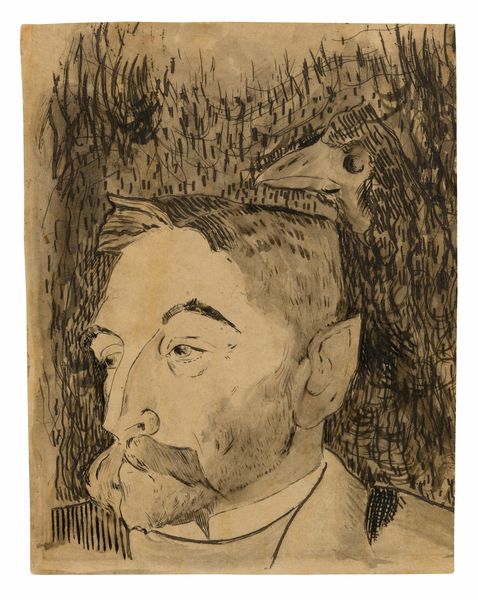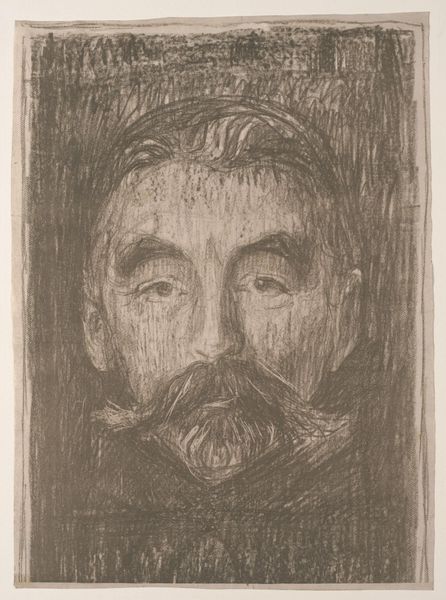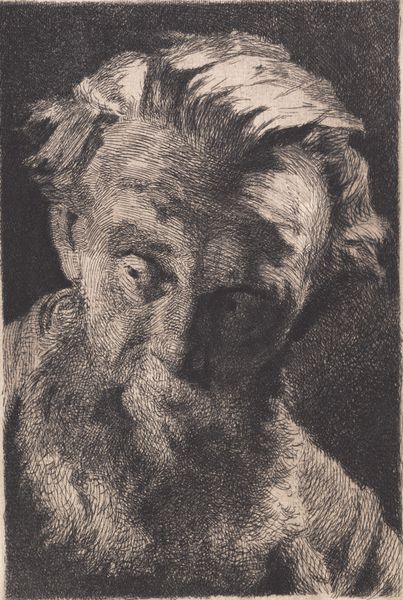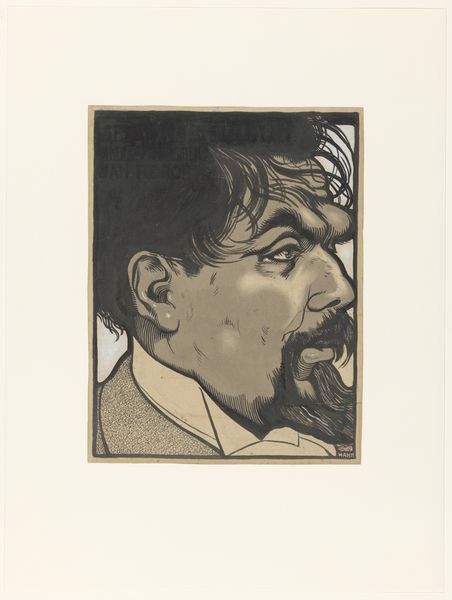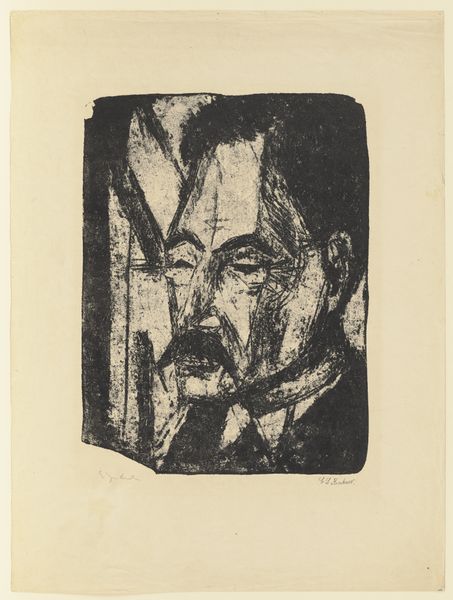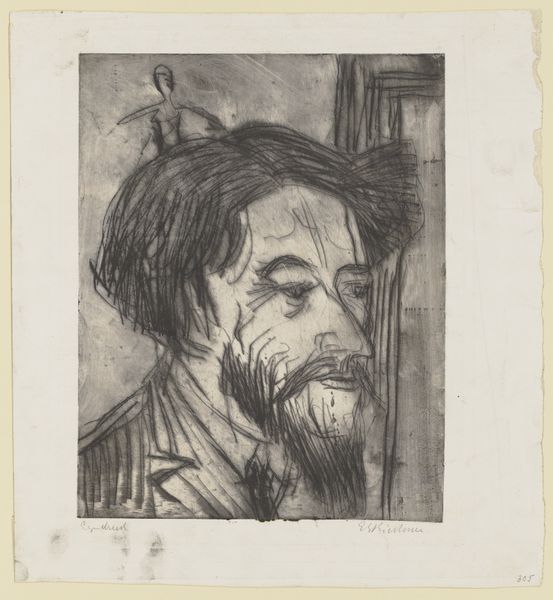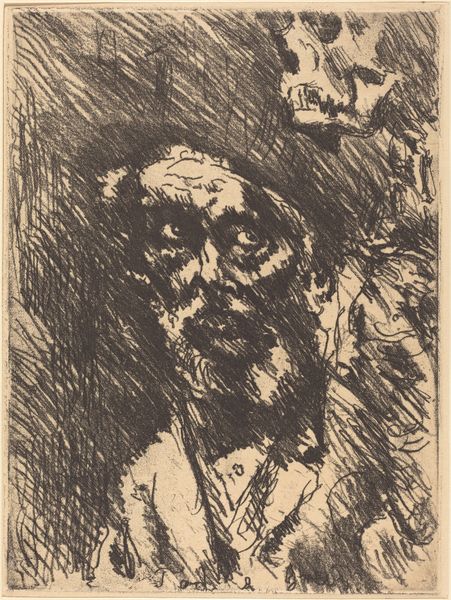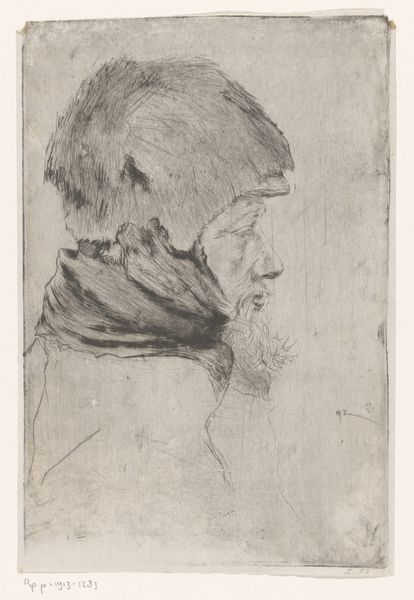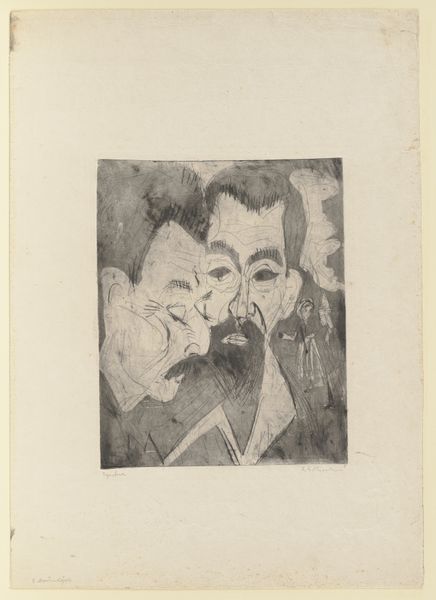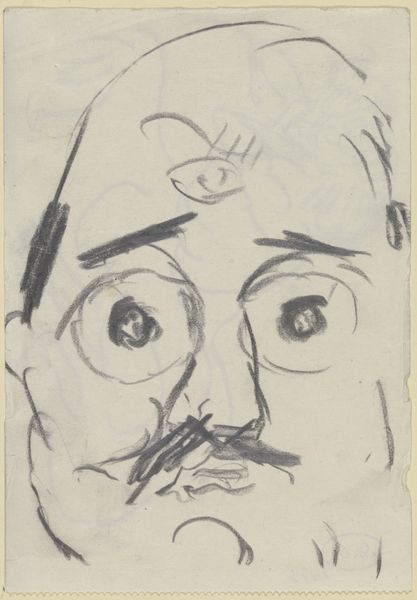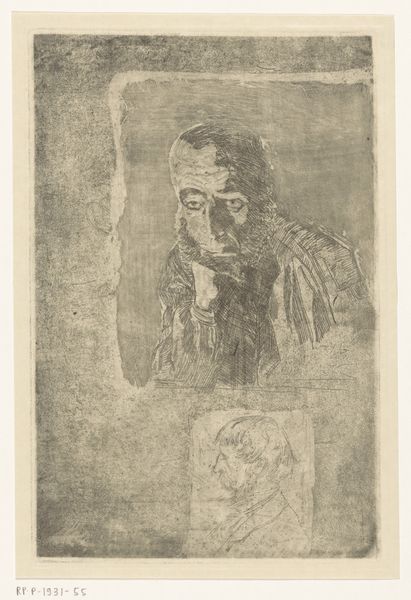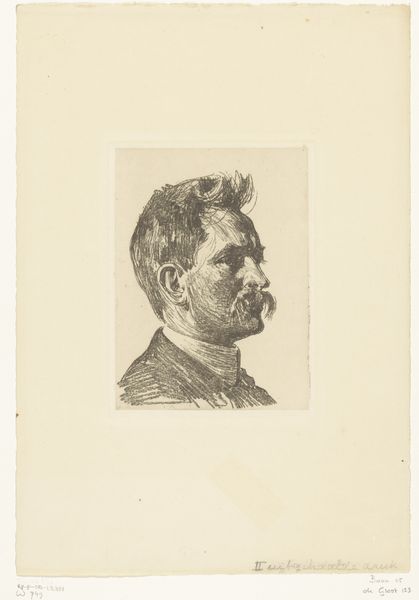
Dimensions: 7 3/16 x 5 11/16 in. (18.3 x 14.4 cm): plate 12 5/8 x 9 1/2 in. (32.1 x 24.1 cm): paper
Copyright: Public Domain
Editor: So, this is Gauguin's 1891 etching, "Portrait of Stéphane Mallarmé," housed right here at the Met. There's something almost haunting about its starkness, a dream-like quality created by the dense lines in the background that really contrasts with Mallarmé’s detailed face. How do you interpret this piece? Curator: Gauguin’s portrait is fascinating, especially considering its place within the artistic circles of the time. Etchings were often vehicles for wider distribution of imagery. But consider, too, Mallarmé’s role in championing artists who were pushing boundaries. What do you make of Gauguin including that raven in the background, perched almost above Mallarmé’s head? Editor: It definitely feels symbolic! Ravens often represent death or mystery. Maybe it’s a nod to Mallarmé’s own symbolist poetry, exploring themes of the subconscious and the unknown. Curator: Precisely! Gauguin, like many artists then, sought to represent not just what he saw, but what he *felt*. The raven then becomes a kind of visual metaphor, alluding to Mallarmé's literary preoccupations and the broader Symbolist movement. This piece circulated among artists, critics, and patrons, helping to cement Gauguin’s own image as a fellow symbolist and pushing these ideas further into public consciousness. Editor: So it was almost like branding? Using Mallarmé's established reputation to boost his own? Curator: Indeed. The art world, even back then, involved networks, reputations, and strategic self-presentation. An artwork isn't made and received in a vacuum, but participates in ongoing conversations. What strikes me now is the relationship of image and text within the political landscapes that support them both. Editor: I hadn’t thought about it like that. I was so focused on the imagery itself. This portrait’s more than just a likeness; it's a cultural statement. Thanks for helping me understand the forces at play here. Curator: Absolutely. It’s in exploring these interconnections that art history truly comes alive.
Comments
No comments
Be the first to comment and join the conversation on the ultimate creative platform.
